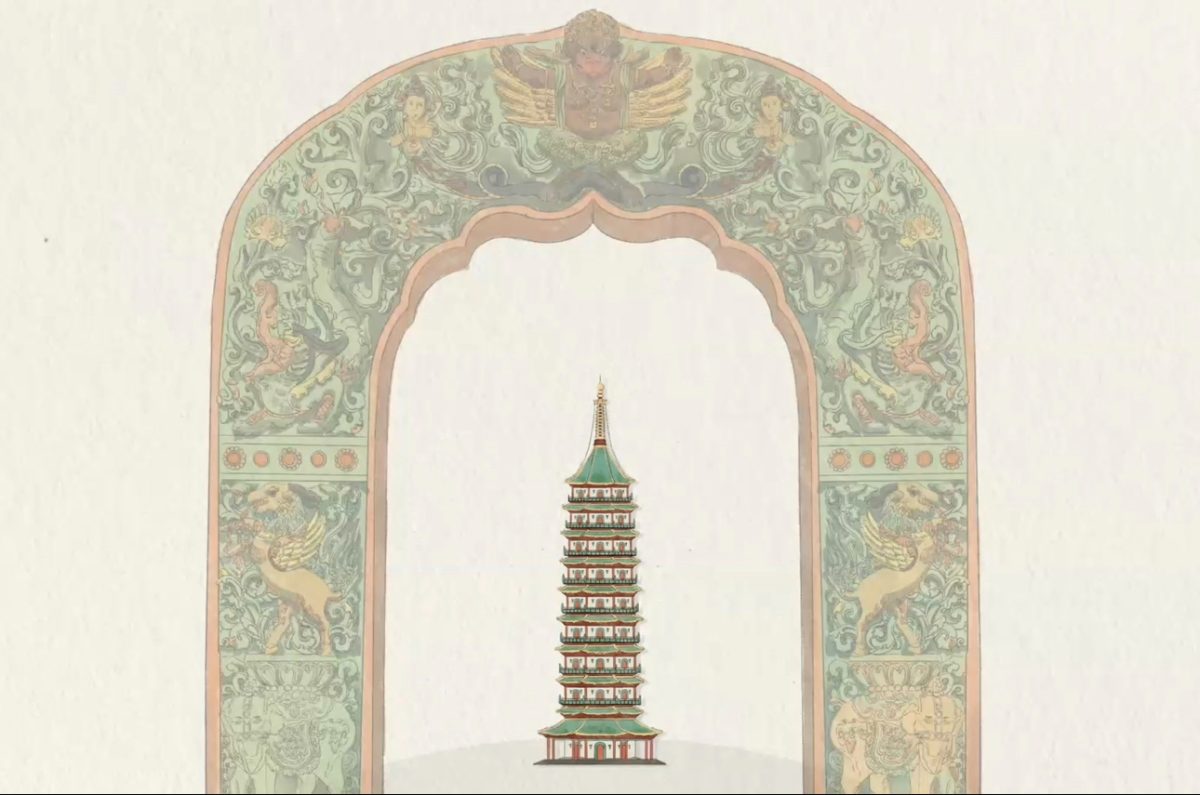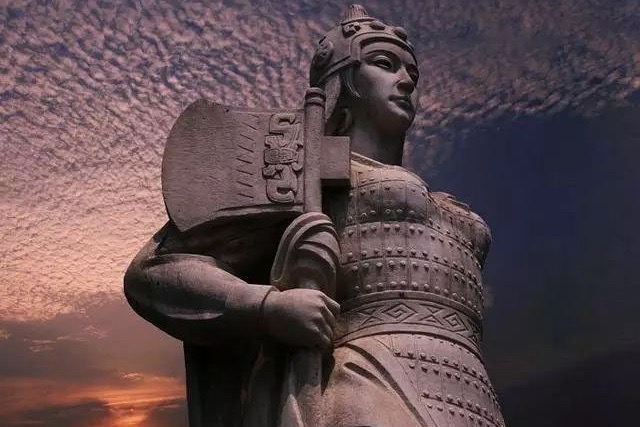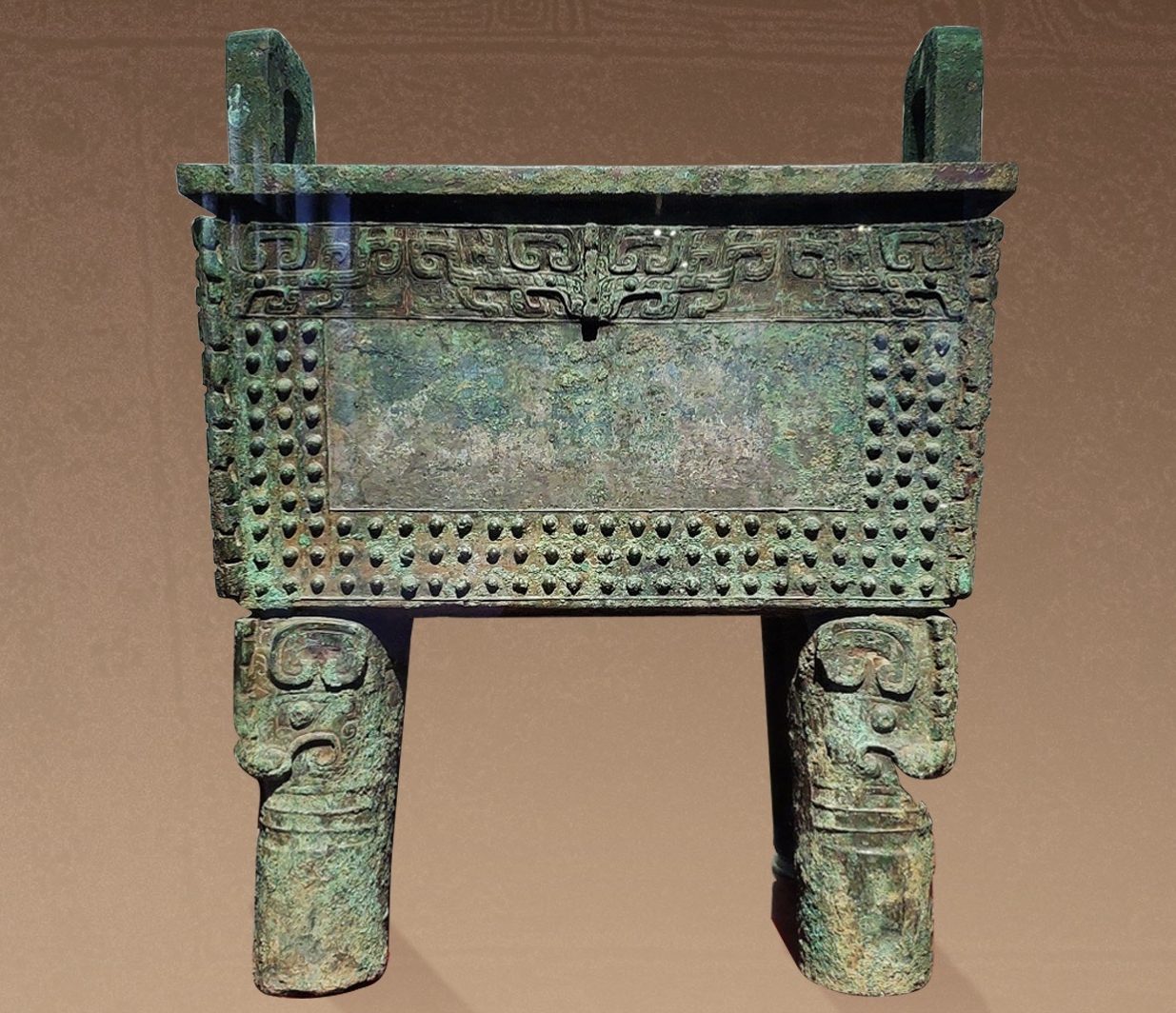The Porcelain arch of Nanjing is an important architectural component of the Porcelain Tower of Nanjing in the Great Bao’en Temple. Which represents the royal temple architecture of the Ming Dynasty (from 1368 to 1644).
The Porcelain Tower of Nanjing was built in the early Ming Dynasty (mid-15th century). And destroyed in the late Qing Dynasty (late 19th century). The Porcelain Tower was designed and built by The Yongle Emperor Zhu Di (reigned 1402-1424) in order to repay his parents for their kindness.
The Tower, which took nearly 20 years to build, is 78.2 meters high and has 9 floors and 8 sides. It is also one of the tallest buildings in ancient China with exact records. Due to the infighting of the Taiping Heavenly Kingdom in Nanjing during the late Qing Dynasty, the glazed tower collapsed. Due to the infighting of the Taiping Heavenly Kingdom in Nanjing at the end of the 19th century (1864), the glazed pagoda collapsed. Nowadays, only one set of Porcelain arches is left in the world for us to visit. This set is currently being collected in the Nanjing Museum as a town treasure.
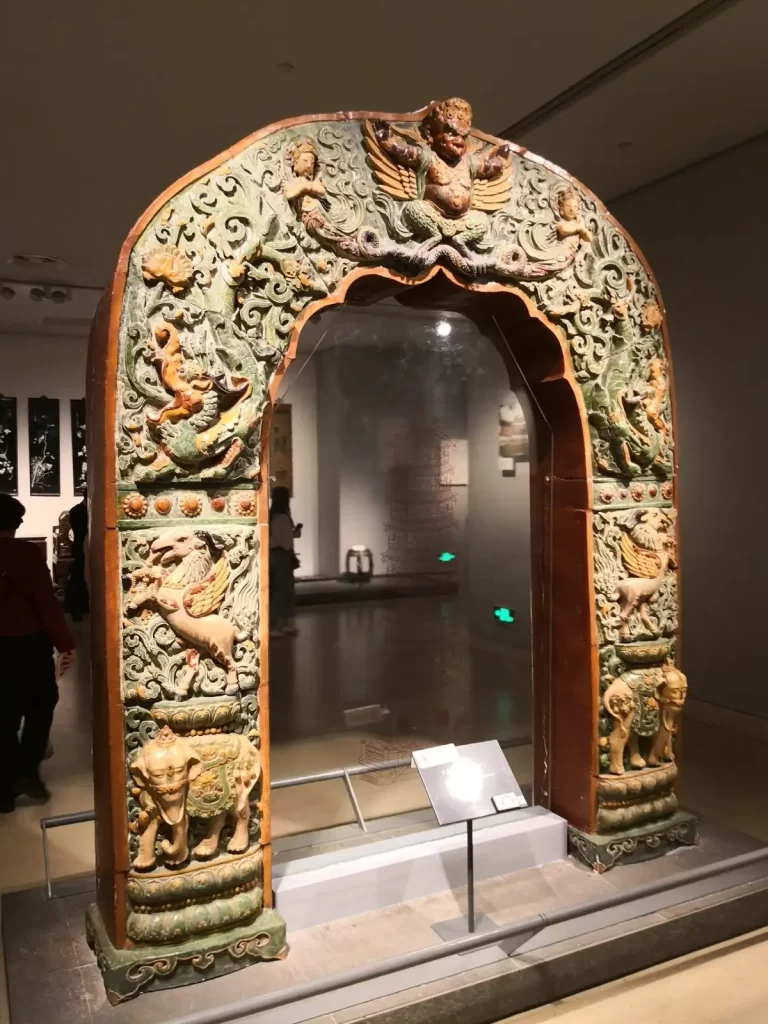
The Porcelain arch
Unearthed in 1958 at the former site of the glazed kiln outside the Zhonghua Gate in Nanjing. At the time of excavation, it was only a batch of defective glazed bricks with mottled glaze, which were later assembled and restored according to the data. The colorful glazed were made through a special process, which can be found on the surviving Porcelain arch.
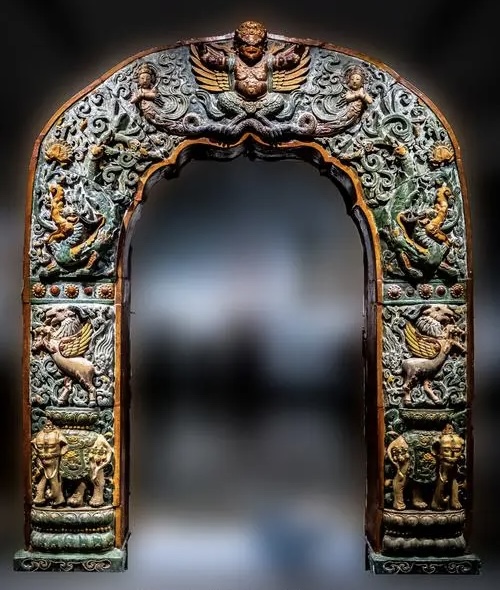
The tower was built with white porcelain bricks that were said to reflect the sun’s rays during the day, and at night as many as 140 lamps were hung from the building to illuminate the tower.

Why didn’t the surviving set of Porcelain arche disappear with the Porcelain Tower of Nanjing?
This is because during the construction of the Porcelain tower, three complete sets of tower builds were fired in order to facilitate subsequent repair work. One set was damaged together with the collapsed glazed tower at that time. While the remaining two sets were buried in the ground. The remaining set was found underground.
Designs on the arch
The image on the archway is the dharma decoration (six apparatuses) unique to Tibetan Buddhism Tantric Buddhism. During the reign of Ming Yongle (1402-1424), the Ming government organized several visits to Tibet by Chinese Buddhist monks, and some monks went to Nanjing for exchanges. At that time, the Nanjing Dajianen Temple was still under construction, so it was influenced by Tibetan Tantric Buddhism.
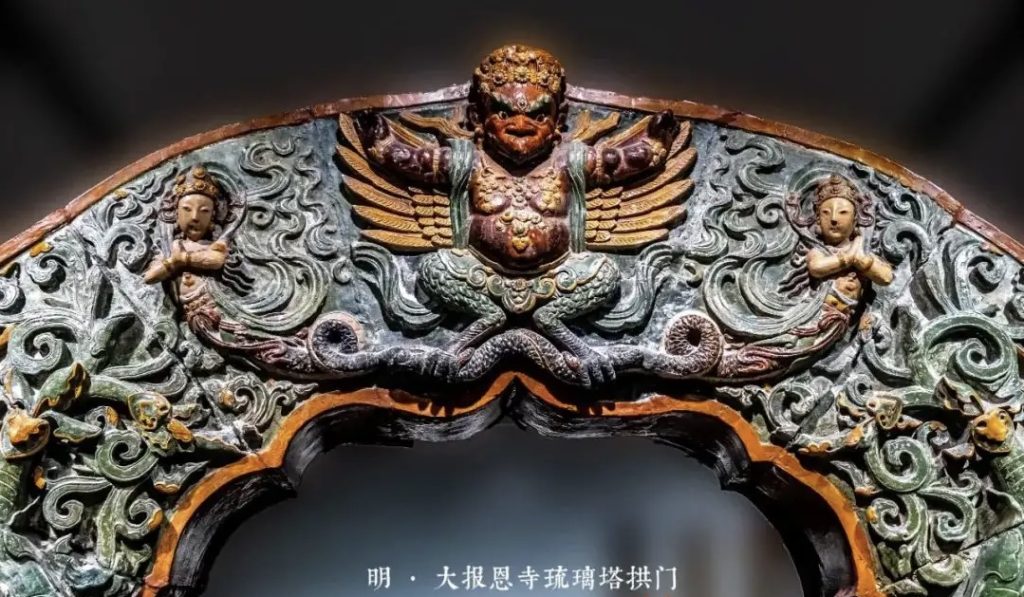
Story between The Porcelain Tower and the West
In the 17th century, the European traveler Johan Nieuhof discovered The Porcelain Tower of Nanjing in the Great Bao’en Temple, and made a painting of it, which he brought back to Europe.
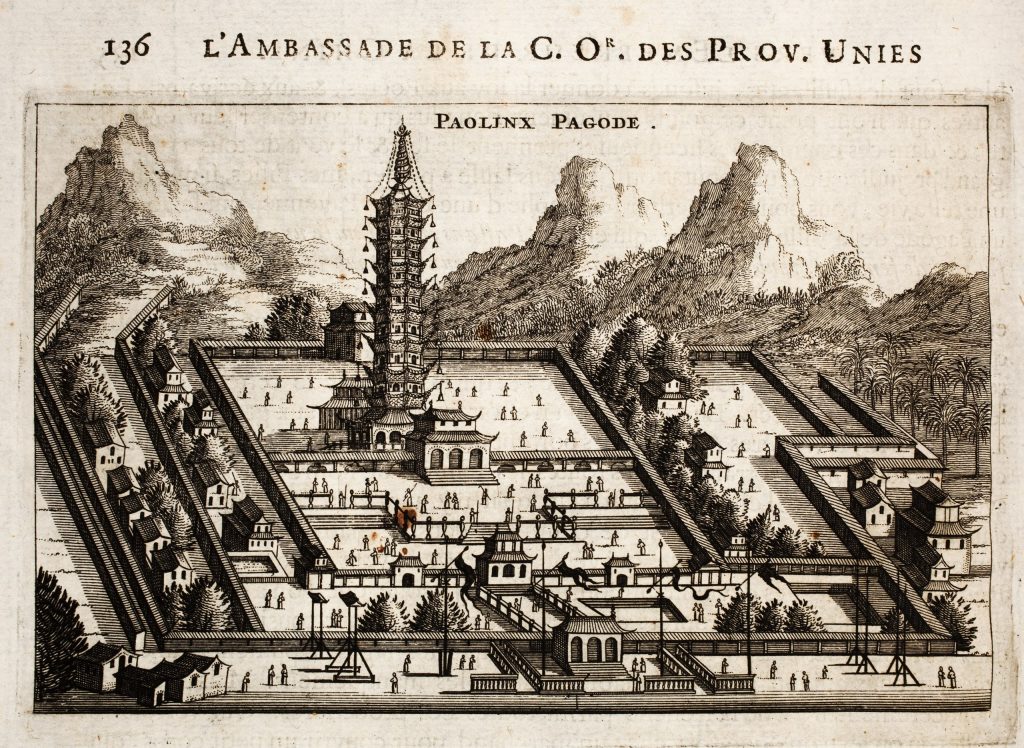
This had a grand impact on Western architecture at the time. The design of the Trianon Palace in Paris, and the Kew Gardens Tower in London, were heavily influenced by this.
There is also a particularly interesting story: in ancient Chinese architecture, the number of stories of a tower is basically singular, whereas the imitation towers built in the West are all ten-story. This is because Johan Nieuhof made a mistake and painted the tower with ten stories.

Nowadays, Nanjing Dajian’en Temple has rebuilt the glazed tower. However, it was not rebuilt using glazed material. This is to protect the underground palace beneath the ruins of the glazed pagoda, in which precious relics such as the Buddha’s relics and the Ashoka Pagoda have been unearthed.
Source
Porcelain Tower, by Johan Nieuhof
Historical accounts and other information from CNKI (the China Knowledge Network)
